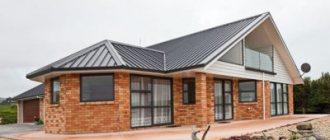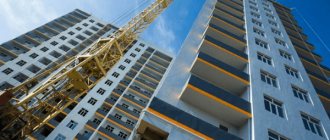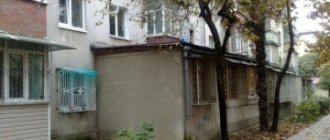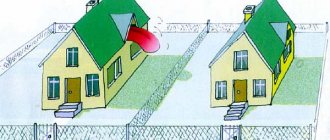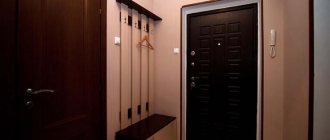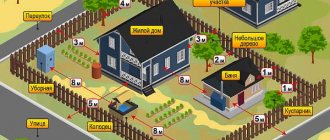Legislative regulation of the issue
The main points concerning this issue are defined in:
- The Constitution of the Russian Federation, which established the right of citizens to private property, as well as the possibility of common use of land.
- Provisions of the Town Planning Code of the Russian Federation.
- Federal Law on the State Cadastre of Real Estate, which established the procedure for registering real estate and its rights holders in the Unified State Register of Real Estate, as well as issuing a title document.
- SanPiN and SNiP regulations concerning low-rise buildings.
- The Land Code and the Civil Code of the Russian Federation, which determined the types of such lands and the procedure for concluding transactions for the transfer of rights to plots from one person to another (purchase, lease, etc.). They also established the features of the common and shared forms of land ownership.
- Order of the Ministry of Economic Development on the procedure for recording ownerless real estate. Its provisions determined how municipally owned land can be appropriated.
Rent or transfer of ownership of adjacent lands is carried out in accordance with an agreement with local governments.
An applicant may be refused if:
- If engineering and communication lines are installed in this area.
- When the registration of ownership of a person will reduce the size of the public area less than that established by law: the width of local and main streets should not be less than 15 and 40 m, respectively.
- If the land has special historical and cultural significance.
- When an allotment can become the property of several persons at once who cannot reach agreement.
How to rent it out?
Is it possible to rent out the area around the house?
In accordance with the Land Code of the Russian Federation, renting the local area of a private house is also available, as is registration of ownership. To do this, you must submit an application to local authorities.
In Art. 65 of the Land Code of the Russian Federation establishes that a fee must be charged for the provision of a land plot for rent.
Its size is determined depending on the conditions of the procedure. They, in turn, are established by the Government of the Russian Federation and local governments.
However, individuals do not always receive a positive response. They may refuse in the following cases:
- There are important communication lines on the site;
- transfer of territory into ownership or lease will lead to a decrease in the width of the space on the street;
- the territory has historical and cultural significance;
- other persons claim to use the site.
If all requirements are met, the likelihood of receiving an approval increases.
Definition of concepts
With regard to private houses, the legislation has not determined what is considered a local area.
More often than not, everyone understands this as a plot of land that the owner of a private house needs to maintain it .
He can be :
- The property of the person who owns the house.
- No specific copyright holder.
- Rented.
Regardless of the form of ownership, a fence can be erected . It turns out that:
- The adjacent territory is a piece of land owned and used by the owner of a private house. It is located inside the fence and is needed by the owner to maintain his property and run the household inside the site. He must keep an eye on her.
- The land behind the fence may be no man's land. But in most cases it is owned by the municipality. It can be owned by several citizens at the same time. Cleanliness and order in such an area is maintained by the municipality.
The territory adjacent to the fence can be used by persons who have been able to present sufficient grounds to obtain possession (easement) and use of this area. For example, a significant reason may be the need of the owner of a private house for vehicles to leave and enter the garage, to transport cargo - without this land it will be impossible to move. Evidence must be documented.
In this case, several citizens can be . For example, owners of houses whose gates and fences are located on common land. Or neighbors of a private house owned by two persons at once.
The range of users is limited only by a specific situation. It will not be possible to block off this area without violating the common law of neighbors.
Burning waste on your own property
Often the owner of a private house is sure that “his yard is his fortress.” This means you can do whatever you want, for example, burn garbage in the garden or yard.
Alas, such an opinion has the right to life as long as your actions do not violate the rights and interests of your neighbors.
It is illegal to burn garbage on your property according to the following legislation:
- Art. 18 Federal Law “On the Protection of Atmospheric Air”, which prohibits the burning of waste and its other disposal in populated areas without the consent of the authorities. Punishable under Art. 8.21 of the Code of Administrative Offenses of the Russian Federation with a fine of 2 to 2.5 thousand rubles.
- Fire regulations (approved by Decree of the Government of the Russian Federation of April 25, 2012 N 390), prohibiting the burning of garbage in populated areas, except in places established by authorities. The punishment comes under Art. 8.32 of the Code of Administrative Offenses of the Russian Federation with a fine of 1 to 1.5 rubles.
At the same time, both competent authorities and neighbors can respond to the burning of garbage by calling the local police officer or fire department.
Another misconception: “I won’t let anyone into the yard and they won’t do anything to me” also helped thousands of citizens receive a completely natural fine. To establish the fact of burning garbage, it is enough for a competent representative of the agency responsible for control to visit the site and attract a couple of attesting witnesses.
All documents will be completed, and the owner of the site will only receive a summons to consider the case.
Setting dimensions
When determining the size of the allotment, you need to:
- Prepare a natural boundary plan, indicating on it all the objects that will be used by the owner of a private house.
- Indicate in the plan the area located behind the fence. It is municipal property and cannot be appropriated. In this case, it is necessary to take into account the differences between private houses adjacent to each other, as well as the internal needs of their owners.
- Discuss with neighbors in the area whether such division violates their rights. Based on this, develop a common solution that would suit everyone and avoid resolving the land dispute in court.
- Having done all this, you can submit an application to the municipal authorities to register rights to the local area. If changes need to be made to the original plan, this will need to be discussed again with the other home owners.
If the area adjacent to a private house does not have an owner, then the owner of the premises can submit an application and evidence that it is ownerless. Local authorities are given 18 days to review. If the fact of the owner’s absence was confirmed during the document check, the land is registered.
No standards have been established regarding the local area for private sector housing. The square footage of land plots (PL) adjacent to the house, in this case, depends on the territory that was rented or privatized . Plus, other factors are taken into account :
- Characteristics of buildings.
- Neighbors' requirements for maintaining freedom of transport and utility lines (this applies to parking spaces, driveways, etc.).
- Landscaping.
- The number of people living near this site.
The territory both behind the fence and inside the fence must be indicated in the technical passport of the residential building and the house management plan. Also, evidence of rights to such plots is available in an extract from the Unified State Register or in the land purchase agreement registered with the BTI (if the land was purchased before 1998). These documents indicate that the building and land plot are owned, and also indicate the size of the territory around the house owned by the citizen.
Marking boundaries: is it possible to install a fence for your territory?
Each plot of land has its own area and a given size, in other words, it is designated in space by boundaries. It is the boundaries of one plot with another that become the most frequent subject of dispute between neighboring owners.
The boundaries of the plot are indicated on the cadastral map; they can be seen in electronic format by downloading the cadastral map via the Internet (you need to enter the plot number). The boundaries of the land plot are also indicated in the cadastral passport of the property.
The law does not establish the minimum size of the local area, so the size of the local area may differ in each territory. To delineate the boundaries of this area, you must do the following:
- Draw up a site plan (you can use the cadastral plan, taking it as a basis and add the designation of buildings).
- Mark on the plan the boundaries of private property and the boundaries of municipal land, as well as the place where they intersect.
- Agree with your neighbors on the right to use the adjacent plot, and then submit an application to government authorities for the right to use the adjacent plot.
If the adjacent area does not belong to the right of ownership, then a person is prohibited from erecting a fence and including it in his personal territory. But after the procedure of land surveying and merging of plots, the local area is recognized as property, which means the owner has the right to dispose of the land at his own discretion.
The adjacent area of an apartment building can also be separated by a fence, however, it will be difficult for the residents themselves to approve such redevelopments; it is much more convenient if the developer took care of solving this issue in advance. Often there are private parking lots belonging to residents of one or more houses, which are separated by a barrier. If this land is owned or leased by the residents of the house, then any use of the site that is not prohibited by law is permissible. A properly designed local area can be separated from the roadway by a fence. But it is prohibited to install any fences in the local area if:
- They interfere or impede the normal passage of other citizens.
- Restrict access to communications.
- They pose a threat to the safe movement of citizens or vehicles.
A frequent situation for litigation: shops renting premises on the first floors of a residential building often use the adjacent territory for other purposes and illegally occupy it. In this case, the owners are left with only a judicial procedure for resolving the dispute (as a rule, a decision is made on the forced elimination of violations). To file a claim, the owners of the territory must record the fact of violation (take a photo, provide the court with a cadastral plan, land survey act, etc.).
A house plot can become part of the territory of a private house only after the land surveying procedure has been carried out and registration of ownership or lease has taken place. If there are no important communications on the site, then it can be fenced off from the adjacent territory, while the use of the site is allowed. Lawful use means the exploitation of the local area for the purposes of the owner (tenant), without violating the rights of other persons and the requirements of the law. The area around the house can be improved, for example, laying asphalt, laying out a lawn, or installing a playground. As a rule, a plot designated as a local area cannot be larger than 2-6 square meters, but the law does not establish either minimum or maximum boundaries for such a plot.
This is important to know: How to get out of SNT if you own land: procedure and consequences
Land surveying procedure
The Law on the State Cadastre of Real Estate states that the revision and expansion of the land plot must be carried out in the following order:
- First, it is necessary to agree on the procedure with all citizens interested in this procedure. This can be achieved either during a general meeting of citizens interested in carrying out the land surveying procedure, or as a result of a personal agreement with a specific person. Notice of the date of the survey meeting must be sent at least one month before the scheduled date.
- Anyone who was absent from the general meeting will be considered aware of the meeting. If someone does not indicate their agreement or disagreement (in writing, indicating the reason for the decision), then the results of the negotiations are considered agreed upon by all interested parties.
- A record of the results of the meeting is made in the land surveying act. If after the procedure no objections arise, the initiator submits the request to the accounting authorities. However, disputes with neighbors may arise even after the boundaries have been determined and the relevant information has been entered into the register.
How is land surveying carried out?
The Federal Law “On the State Real Estate Cadastre” establishes that land surveying is available only if this procedure is agreed upon by all persons who have ownership rights to the adjacent plot.
The presented meeting should be held as a gathering of interested parties. It is also possible to conduct negotiations for each participant separately.
Interested parties must be given notice at least four 30 days prior to the meeting. If they refuse to attend a meeting, they are considered to have been given notice of the meeting.
If interested parties have not expressed any objections, there are no obstacles to boundary delineation. As a result, it is necessary to create a corresponding entry in the land surveying act. After carrying out these manipulations, a notification is given. Then the owner can register the area around the house with cadastral registration.
However, carrying out this procedure does not exclude that in the future a citizen will not encounter the problem of disputes with neighbors regarding land surveying.
Fencing installation
The owner has the right to independently select a suitable fence, focusing only on his own capabilities and goals.
It allows you to separate private property from municipal property. Installation of a fence will also require coordination with neighbors , as well as:
- Bodies responsible for the state system of architectural and construction supervision.
- With the main unit of the Ministry of Emergency Situations in the region.
The departments of construction and architecture, as well as property management, will require photographs of the property and documents containing basic information about the house, site and fence from the owner of the fence.
Without the consent of neighbors and authorities, a fence built is considered an unauthorized construction. If violations are discovered during the construction of the fence, the case may go to court. He may decide on complete or partial dismantling.
A fence or other fencing must be installed taking into account the boundaries recorded in the title documentation for the house and land. Such structures make it possible to secure real estate and clearly delineate private territory.
Examples of arrangement and fencing of adjacent areas in private residential buildings are presented in the following video:
The legislative framework states that the definition of “adjacent territory of a private house” in documentary form and with the corresponding calculations does not exist in the laws.
This phrase denotes a plot of land near a specific private housing construction that the owner himself needs. He needs such a territory to maintain his personal real estate and freely run his household.
The homeowner can rent this plot, obtain private ownership rights to it, or the plot can be in homeless use. On the border of this territory, you can, for example, install a fence or fencing, store firewood, etc.
Thus, the inner part of the land of the owner of a private house, fenced off by a fence, is also included in his property. The territory located on the outside of the fence is not considered the property of the homeowner and is most often municipal or, in rare cases, no one's.
The use of the area located near the fence is claimed by those persons who are able to document and prove their right to ownership (for example, to move a car to a garage or transport various cargoes).
One of the features of owning such a plot is the possibility of it being owned by several people at once.
Documents and legislation
To determine the footage of a local area, at the legal level there is a whole list of documents, according to which this area is defined as a local area.
Information to determine the plot itself, its size and possible rights to it may be contained in:
- Constitution;
- Land and Civil Codes;
- SNiPakh;
- SanPiN;
- Law “On the State Real Estate Cadastre”;
- Technical passport and plan of the house and land plot for it.
The calculation of the adjacent plot of land is carried out according to a formula that includes such parameters as the total area of the premises of the entire house (Sr) and the specific indicator of part of the land plot (Ypz), which is calculated according to SNiPs. The data for its calculation is taken exactly at the time of construction of the house.
Sn=Sr*Ypz
This calculation formula is suitable for land plots located around apartment buildings. For the private sector, there is no norm for such a territory and no calculation of the number of possible meters of adjacent territory.
To determine the size of such a plot of private housing construction territory (leased or owned), it is necessary:
- Drawing up a plan with the boundaries of the territory, with all existing buildings;
- Designation on this plan of the footage of the local area, which is in city ownership;
- Negotiating with owners of neighboring private households whose rights may be affected and searching for a common mutually beneficial solution;
- Applying to local government authorities to legally secure the rights to own a given local area.
The land adjacent to the fence can be made your own or rented.
To document such rights and legally register the plot, it is necessary to have entries in the certificate of ownership or the real estate purchase and sale agreement registered with the BTI (if the purchase took place before 1998).
Littering of the surrounding area
You may be held responsible for storing construction materials (sand, boards, screenings, etc.) near a private home. At the same time, they can punish both storage of materials outside the territory adjacent to the house, and on their own territory - it depends on regional legislation.
In each locality, local improvement rules and associated restrictions apply. In large cities, such documents can be approved up to the level of the urban district; in the periphery, each district or even urban settlement adopts these Rules individually.
In many urban and rural settlements, there is a ban on long-term storage of building materials or their storage without obtaining a building permit.
It is impossible to derive any single algorithm here - each city has its own rules and before unloading a pile of sand or firewood in front of your house, it is better to familiarize yourself with the local legislation and get clarification from the municipality.
- Fines range from 500 to 2500 rubles.
The powers to monitor compliance with this norm are vested in administrative commissions of municipalities or precinct commissioners.
Rules for delimiting territory
The federal law, which establishes the boundaries of private plots, provides for mandatory agreement with persons who are interested in redistributing this plot at a general meeting (notification of such a meeting is given no later than 1 month before the meeting itself).
Persons who refused to attend the general meeting, but who received the appropriate notification in due time and did not express their attitude to the upcoming land survey in writing, are considered as agreeing with such land survey (noted in a special act).
After the approval procedures have been carried out with all interested parties and the relevant notice has been issued to them, the person interested in the delimitation is obliged to register this site for cadastral registration.
However, even such a sequence of actions and strict adherence to the law does not exclude possible disputes about how many meters and what part of the local area of a private house has become the property or lease of the homeowner.
The legislative framework
What is the local area of a private house according to the laws? At the legal level, a number of documents are presented that determine the conditions for the use of local areas. Citizens can find detailed information in:
- Constitution of the Russian Federation;
- Land and Civil Codes;
- Law “On the State Real Estate Cadastre”;
- SNiPakh;
- SanPiN;
- Technical passport and plan of the house and land plot for it.
Receiving up-to-date information will allow you to know your rights and obligations.
Right to rent
The adjacent territory of a private house can be leased by the owner in accordance with the procedure established by the Land Code.
To do this, the owner of private housing construction must contact the local government with the necessary application for the right to such a lease and obtain the relevant documents, which will establish the size of this territory, the number of meters and the established rent.
It is worth considering that if there are important communications passing through this territory, in the event of a decrease in street space during the transfer of ownership, location on a historical or cultural site, as well as the location of the site in the ownership of other homeowners, this may become grounds for refusal to award rental rights or property rights.
Considering that the size of the land plot adjacent to the housing construction is not determined by law, it can be determined independently from the documents on the ownership of a private house.
The area and number of meters around the house are fixed in the cadastral passport. After the privatization procedure is completed, not only the fact of ownership of the building is entered into it, but also how many meters around the house belong to the owner, indicating the geometry of this site.
Local administrative authorities quite often impose on homeowners the obligation to maintain proper appearance and monitor cleanliness and the fence on the outside of an area that is not legally the local area of a private house, but which may become so by appropriate resolution of municipal authorities.
Typically, a distance of 1-1.5 meters is accepted by municipal authorities as a home area, the cleanliness and order of which must be ensured by the owner.
The question of how many meters the size of a plot of land adjacent to private housing construction can be should be answered based on what kind of territory is meant: behind the fence or inside the fence.
The territory that is located on the inside of the fence around the house itself is determined according to the cadastral passport, and that which is located on the outside is municipal property. Based on the needs of the homeowner, the boundaries of this territory can be expanded in the manner prescribed by law.
Many owners of private houses are interested in issues related to the local area.
Does it need to be looked after, how and what can it be used for, and where are its boundaries?
How many meters of local area in the private sector? Let's look at all this below.
Dear readers! Our articles talk about typical ways to resolve legal issues, but each case is unique. If you want to find out how to solve your particular problem, please use the online consultant form on the right or call. It's fast and free!
Basic Concepts
The adjacent territory is a plot of land that borders a building and is used by the owner of the building to meet his needs.
In the legislation of the Russian Federation there is no precise definition of the local area of a private house. Usually it refers to a part of the land near the yard of the house owner, which he needs to maintain his plot.
Mostly, owners of private houses completely enclose their property with a fence. It is a mistake to believe that the territory behind the fence has no owner. This land belongs to the municipality. In order to obtain the right to use this land in their own interests or dispose of it, the owner of a private house must justify his easement.
All legal issues are regulated by the Constitution of the Russian Federation, the Civil Code, the Land Code, the Law “On the State Real Estate Cadastre”, cadastral and technical documents for land.
Studying regulations
All legal issues related to the use of land plots are regulated by the following regulations:
- Civil Code of the Russian Federation.
- Land Code of the Russian Federation.
- Federal Law “On the State Real Estate Cadastre”.
In order to dispose of a land plot, it is necessary to register it as ownership. This right can be exercised in several ways:
- Privatization, i.e. free receipt of ownership of a property from municipal property (a citizen of the Russian Federation can privatize a land plot only once).
- By purchasing.
- Inheritance by law or by will.
By registering ownership of the land, a person thereby determines the boundaries of his own territory from municipal and other lands. The above-mentioned regulations define the procedure for acquiring land as a property, as well as the basic rules for its land surveying, but none of the documents gives a clear definition of the concept of “domestic territory”.
The local area is not an exclusive attribute of private houses. Apartment buildings also have adjacent plots, and here violations of the use of these plots are much more common than in the private sector.
The Town Planning Code of the Russian Federation does not have a clearly defined meaning of the adjacent plot (shape, area, etc.). However, this regulatory act establishes maximum and minimum values for the adjacent area of apartment buildings.
According to the standards, the minimum area of a house plot is equal to the area of the parameters of the high-rise building itself, which in principle is logical. This area can be enlarged through the procedure of increasing the local area (very often the need arises due to the lack of parking spaces or children's playgrounds, which can be implemented in the local area). However, it is prohibited to unilaterally seize land without permission. As a rule, developers independently engage in expanding the territory of new houses during the construction or commissioning stage.
Procedure for marking boundaries
To determine the clear boundaries of the local area of a private house, first of all, look at the cadastral passport of the land plot. After privatization, it must indicate not only the boundaries of the private property itself, but also the adjacent area that belongs to it.
REFERENCE: According to the laws of the Russian Federation, a citizen can become a participant in privatization only once.
For residents of the private sector, there is no exact number of meters that the local area can occupy. In each specific case, the size of the local area of a private house may differ. To determine the boundaries of the territory that applies specifically to your private home, you need to consider the following points:
- draw a plan diagram of the site and indicate on it all the objects necessary for the use of a private house.
- Mark on your plan diagram the municipal part of the land that is adjacent to your property.
- Coordinate all controversial issues with the owners of neighboring plots claiming to use this territory.
- Provide documents to the Authorized State Bodies to establish the rights to use and own the local area.
REFERENCE A plot of land adjacent to the fence of a private property can be registered as a property or leased.
Next we will talk about what can be considered a local area, how many meters from a private house?
conclusions
After reviewing the information presented, we conclude that the described territory may belong to the owner of the property if there are no obstacles to this.
It can be owned or leased. It is worth remembering that maintaining the site is a prerequisite for use.
To carry out procedures regarding the territory near the house, you need to contact local authorities with a prepared package of documents.
You can also learn about registration of rights to the local area by watching the video:
See also Phone numbers for consultation March 08, 2021 kasjanenko 1535
Share this post
Discussion: 2 comments
- Ivan says:
10/24/2019 at 01:20If a person wants to register the local area as his private property, will it be necessary to make changes to the cadastral documents regarding the entire plot of land on which the house is built?
Answer
- Oleg says:
05/29/2020 at 01:27
If the adjacent territory of a private household is in municipal ownership, who is responsible for maintaining it in proper condition, is the owner of the house obliged to take this upon himself?
Answer
Standards and regulations for the local area of a private house - how many meters from the house?
The legislation of the Russian Federation does not provide for any specific standards and norms that are the same for all homeowners. Each region has the right to independently determine for itself the basic standards in force for the local area.
How many meters from the house is considered the local area of a private house? In most cases, the local area of a private house occupies approximately 1.5 - 2 meters from the fence.
Let's consider the main responsibilities of private homeowners in relation to the land behind their fence. Regardless of whether you are the owner or tenant of such territory or not, municipal authorities assign the following responsibilities to you:
- regular cleaning of the area behind your fence from debris (in the fall - from leaves, in winter - from snow);
- ensuring the safety of underground communications;
- ensuring unhindered access to various emergency services - fire, ambulance, emergency water and gas.
There are many options for using the local area: you can organize a beautiful lawn, arrange a convenient entrance for a car, or install a swing for children. However, there are some restrictions on the use of such a site. The municipality prohibits:
- install poles, signs, fences and other structures without permission;
- burn garbage;
- litter with building materials and other items.
Who should maintain and equip it?
At the federal level, requirements for the maintenance of local areas are established. To do this, you should familiarize yourself with the following Rules and Standards for the technical operation of the housing stock:
- Cleaning the area around the house. It involves collecting household waste and transferring it to metal waste bins. They must have a maximum volume of 100 liters and be installed under a canopy. In spring and autumn, it is mandatory to paint garbage bins. Burning waste of any kind is prohibited.
- Landscaping of the site. After thorough cleaning of the area, which is completely ready for use, landscaping needs to be done. It is not advisable to plant mulberry, poplar and other trees that can clog the area.
Surveying
Land surveying is a set of works aimed at establishing the exact boundaries of a land plot and further legal registration of the results of this work. Landmarking of the local area is carried out in the following cases:
- to purchase the site from the administration and register it as property;
- to register a lease for a plot;
- when controversial issues arise between neighbors.
The surveying procedure includes the following steps:
- agree with all interested owners on the boundaries of the site. It is better to formalize such an agreement in writing, since during the land surveying process one of the neighbors may change their opinion.
- A meeting must be held to discuss and make a common decision. Each participant must be notified of its location and time 30 days before the meeting itself.
- In the absence of one of the participants who had information about the meeting, the survey will be considered agreed upon.
- Direct surveying is carried out by specialists before the meeting.
The act of approving the boundaries of a land plot.
If there are no legal grounds for refusal, the owner of a private house can become the owner or tenant of his local area. To do this, you need to collect the necessary documents and contact the local administration. We must not forget that maintaining cleanliness and order behind the fence is your responsibility.
There is no specific and clear definition for the concept of local area in the current legislation of the Russian Federation.
There are different versions of the interpretation of this term, but each of them is quite vague and, moreover, does not have an exhaustive character of presentation.
If we take a collective definition of the local area, then we can stop at the following: local area is the territory that is adjacent to the building and can be used at the discretion of the owner of the building. The specifics of such a territory should be considered.
Dear readers! Our articles talk about typical ways to resolve legal issues, but each case is unique.
If you want to find out how to solve your specific problem, please contact the online consultant form on the right. It's fast and free! Or call us at :
+7 Moscow, Moscow region
+7 St. Petersburg, Leningrad region
+8 Federal number (free call for all regions of Russia)!
How many meters from the house is considered the local area of a private house?
In relation to the so-called “private” house, it is difficult to find the concept of “adjacent territory of a private house”. Literally, the meaning of this phrase means a plot of land necessary for the owner of a particular house to maintain and maintain the latter.
Such a plot can be leased, act as property, or be in homeless use. According to the outline of this, you can install a fence or store firewood, as an option.
Thus, a plot of land (the very same adjacent territory), which has a fence in the form of a fence, is defined as “no man's land”, and in terms of its form of ownership it is municipal.
The legal authority to use such land belongs to persons who are capable, from a legal point of view, of giving a thorough explanation of their rights to own and use the said land.
As an example, the owner of a house needs such a territory to move his car out of the garage, drive through with cargo, or rather, he needs to move around this piece of land to ensure full use of the yard and house.
There can be a lot of similar reasons. However, it is worth noting that at the same time several interested parties can exercise this right with full rights, such as, for example, neighbors from two households on the same side.
Thus, land that is in common use must be located behind a fence and be available for unhindered use by other persons. Based on the above, blocking such an area means violating someone’s rights and freedoms.
Regulatory framework
In terms of the topic under discussion, this is:
- The Basic Law is the Constitution of the Russian Federation;
- Federal Law “On the State Cadastre of Real Estate”;
- Regulations on SNiP regarding low-rise construction;
- Civil Code of the Russian Federation;
- SanPiN of Russia;
- Land Code of Russia;
- Registration certificate for the house;
- Plan of the plot of land on which the private house is located.
The dimensions of such a local area should be calculated using the following formula: Sn=Sr*Уpz.
Sn is an indicator of the local area;
Sr is the area of premises in the house;
Уpz is a specific indicator of the share of a plot of land.
It is calculated per 1 m2 of living space. This indicator will be directly determined by the number of floors in the house, as well as the date of construction of the house.
However, we note that such a calculation applies only to areas adjacent to apartment buildings. Regarding the private sector, there are no rules for the local area. For this reason, the size of land plots is determined by the leased or own territory.
It is worth adhering to the following important conditions in order to determine the size of the land plot that can be used for yourself in the private sector:
- We draw up a plan of the natural boundaries of the territory, marking it with all the objects necessary for the use of a private house;
- Within the framework of the plan, we designate a section of the adjacent territory that is in municipal ownership and, accordingly, cannot be alienated;
- Talk to neighbors whose rights may be affected. Listen to their opinion in order to subsequently make a common mutual decision;
- Only after going through the previous stages, contact the local government authorities in order to secure the rights to own this adjacent plot. It is likely that adjustments will need to be made to the initial proposal.
How to apply?
This territory can actually be owned or rented.
So, to register such a territory, you should prepare:
- Documents evidencing state registration of rights to the house itself and the land plot (since 1998);
- Purchase and sale agreement with registration in the Bureau of Technical Inventory (period until 1998).
Provided that an individual has a desire to register the adjacent territory for use, he should contact the local government authorities.
According to the order of the Ministry of Economic Development of the Russian Federation dated November 22, 2013 No. 701, real estate in the form of a plot must be registered by decision of local government bodies.
All you need to do is draw up a corresponding application, as well as provide the documentation that would confirm that the object you are looking for is in a state of “ownerlessness.”
The fate of the site must be decided, in this case, after 188 days have passed, starting from the date of acceptance of your application.
Local government bodies are required to consider the application on its merits, after which, upon making an affirmative decision, information is entered into the Unified State Register, which indicates registration.
Procedure and rules for land surveying
Following the Federal Law “On the State Cadastre of Real Estate”, the determination of new boundaries of the territory of land plots is carried out with the obligatory approval of the full range of persons who have ownership rights to an adjacent plot of land.
Such a coordination process can be carried out in the form of a meeting of citizens interested in the issue of such land surveying.
However, it is worth remembering that the above-mentioned persons are notified in advance of such a meeting, which must take place at least 30 days before the land survey.
Citizens who are interested in holding a meeting, if they refuse to attend it, are considered notified of this event.
Provided that citizens, duly notified, have in no way expressed their opinion on the essence of the survey being carried out, this survey will be perceived as agreed with these citizens.
This fact is recorded as part of a special survey act. Following this recording, persons must be notified.
When the person who was invited to the meeting does not show up within a certain period of time, in this case, the initiator and the main interested citizen have the right to register a plot of the local area in the cadastre.
However, let us note that such actions cannot exclude controversial issues arising in the future among land survey neighbors.
Regarding rent
The lease is carried out in accordance with the provisions of the Land Code of the Russian Federation. It is worth contacting your local government to apply for the right to rent.
In accordance with the provisions of Article 65 of the Land Code of the Russian Federation, a fee may be charged for plots of land leased in amounts determined by the terms of this lease.
Such specified conditions come from the Government of Russia, as well as local authorities of the locality.
Reasons for possible refusal to register a lease or ownership:
- Significant communication lines are laid along the desired territory;
- The transfer of a plot of land into the possession of the owner will entail a change in the negative direction of the width of the street space by an indicator less than permissible (we denote that the width of the streets should not be less than 15 meters for local significance and 40 meters for the main value, respectively);
- When the location of the site takes place in an area of historical and cultural significance;
- Provided that other owners have property rights in relation to this plot of land, and their consent, accordingly, is absent.
How to register ownership of the local area?
How is the landscaping of the adjacent territory of a private house carried out? Based on the information presented, we can conclude that the interior of the site, fenced off by a fence, is the property of the owner of the house. In turn, the surrounding area mainly belongs to the municipality.
In order to have full rights to dispose of the site, it is necessary to obtain documentary evidence. It is worth considering that several people can own it at the same time.
Registration of the specified territory is available in the form of ownership or lease.
To complete this, you need to prepare a certificate of state registration of the right to the house and land. You can also provide a purchase and sale agreement with registration in the BTI.
If citizens wish to register the territory adjacent to a private house for personal use, they should contact the local government authorities.
In accordance with their decision, the site can be registered. An individual must prepare an application and a certificate confirming that the object is in an abandoned state.
Local authorities will make a decision within 18 days. The application is considered and if the answer is positive, the document will be entered into the unified register of the Unified State Register. This means that it becomes included in the appropriate accounting.
How many meters from the house is considered the local area of the apartment building?
In order to calculate the boundaries of the space belonging to your home in meters, you should take into account the following indicators:
- Availability of public roads;
- The level of density of adjacent buildings;
- Floors of the house.
Next, let's analyze the standard calculation formula.
So, the adjacent area of the apartment building - Snor, is the result of multiplying the size of the living space, in a given house - Sk, and the specific unit of land share, by 1 m2 of housing - U.
Snor. = UxSk
In this case, the value of the specific unit of land share per 1 m2 is calculated according to SNiP standards. These standards are differentiated according to the criterion of the date of commissioning of the house.
It should be remembered that in legal practice more complex formulas are used for calculating the border areas of apartment buildings, however, this happens to resolve dispute situations among several citizens.
Legality of ownership of the territory near the apartment building
By purchasing an apartment, you become the owner of not only living space, but also a plot of land next to your home.
This area is intended to ensure your comfortable and full use of the house and yard, for example, for walks, walking pets, children playing and car parking. The real situation is somewhat different from the idealized picture described above.
What is included in the local area:
- The land plot on which the MKD building is located;
- Various types of facilities that service the building and provide assistance in its operation (for example, transformers, sports and children's playgrounds, car parking);
- Green areas and other landscaping items are at the discretion of the co-owners of the apartment building.
It is possible to manage the territory adjacent to an apartment building either independently or through a trusted management organization, as well as any non-profit company with the required specialization.
Dear readers! Our articles talk about typical ways to resolve legal issues, but each case is unique.
If you want to find out how to solve your specific problem, please contact the online consultant form on the right. It's fast and free! Or call us at :
+7 Moscow, Moscow region
+7 St. Petersburg, Leningrad region
+8 Federal number (free call for all regions of Russia)!
“Rules for the use of the local area and maintenance of common property”
Dear owners!
Please read the final version of the “ Rules for the use of the local area and maintenance of the common property of apartment buildings .”
RULES for the use of the local area and maintenance of the common property of apartment buildings 2315 A, 2315 B (124365, Moscow, Zelenograd, 23 microdistrict)
- INTRODUCTION
1.1. The purpose of these Rules is to establish the procedure for the use of premises, maintenance and use of common property of apartment buildings 2315 A and 2315 B (hereinafter referred to as MKD), as well as the adjacent territory. 1.2. The requirements of these Rules are mandatory for compliance by all owners of residential and non-residential premises in apartment buildings, their families, employers, tenants, employees and visitors, representatives of the management company, as well as persons with whom the management company enters into labor or civil contracts. 1.3. These Rules apply to the use and maintenance of premises and common property in apartment buildings and the surrounding area.
- GENERAL PROVISIONS
2.1. These Rules were developed on the basis of the Housing Code of the Russian Federation, the Civil Code of the Russian Federation, “Rules and norms for the technical operation of the housing stock”, approved by Resolution of the State Construction Committee of the Russian Federation dated September 27, 2003 No. 170, Decree of the Government of the Russian Federation dated August 13, 2006 No. 491 “On approval of the Maintenance Rules common property in an apartment building”, other acts and norms of current legislation. 2.2. The right to amend, supplement, revise, suspend or cancel these Rules belongs to the general meeting of owners. 2.3. In the text of these Rules, “obligations of the owner of a premises in an apartment building” mean rules that are mandatory for implementation by both the owner of any premises in an apartment building, and the tenant of this premises, or the tenant, regardless of whether they live in this premises, as well as family members the owner (or tenant) of the premises, employees, temporary residents, guests or invitees, representatives of the management company, as well as persons with whom the management company enters into labor or civil contracts.
- RULES FOR USE OF COMMON PROPERTY
3.1. Owners of premises in an apartment building do not have the right to use the common property of the apartment building for purposes that do not correspond to the purposes of residence and use, and are obliged to comply with the provisions of the current legislation of the Russian Federation. 3.2. The stroller room can only be used by residents of the apartment building to store baby strollers. 3.3. When using common property it is prohibited: 3.3.1. Post notices on landings, elevators, doors, etc. Information boards in the elevator halls of the 1st floor are used to post notices related to the management and maintenance of apartment buildings. The advertisement must be removed within 2 days after the end of its use by the person who posted it. On information boards it is allowed to post notices regarding the management and maintenance of apartment buildings by the management company, the building council or the owners of premises in the apartment building. 3.3.2. Make inscriptions on walls, doors, steps of stairs, in elevator cabins and on any surfaces of structural elements of the house; 3.3.3. Litter; 3.3.4. Breaking and using mailboxes for other purposes, opening and removing mail from someone else's mailbox; 3.3.5. Smoking; 3.3.6. Drink alcohol and alcohol-containing drinks; 3.3.7. Destroy and steal common property; 3.3.8. Unauthorized access to premises closed for public use: roofs, attics, heating points, elevator facilities, ventilation shafts, equipment storage rooms, management organization premises, transformer and substations premises, control cabinets. 3.3.9. Unauthorizedly open house-wide electrical distribution boxes, turn off house-wide electrical equipment, close house-wide pipeline valves; 3.3.10. Store or allow the storage of any items in public places without a corresponding decision of the general meeting of owners; 3.3.11. Store explosive, flammable, toxic materials in the premises of the apartment building, incl. and in storage rooms; 3.3.12. Install canopies over loggias or balconies; 3.3.13. Hang ropes, install clothes dryers or other similar devices for hanging any items (clothing, carpets, signs, etc.) outside loggias, balconies and in common areas; 3.3.14. Install additional TV, Internet and television antennas on the facade of the building. External units of the air conditioning system are placed, in agreement with the management company, only in baskets installed by the developer on the facade of the building. 3.3.15. Throw garbage, matches, rags, personal hygiene products and other similar items that can lead to blockages into plumbing and sewerage equipment and networks. Repair work to eliminate any damage caused by improper use of any plumbing and other equipment is carried out at the expense of the owner of the premises through whose fault this damage occurred. 3.3.16. Completely close existing sewer pipe inspections. To do this, it is necessary to use easily removable materials or to ensure maintenance and repair, create a technological opening with a door measuring at least 200x200 mm. 3.4. Procedure for using elevators: 3.4.1. When using the elevator, it is prohibited to: overload the elevator, damage the walls, lighting, doors, buttons and other equipment of the elevator, interfere with the opening and closing of the elevator doors, transport objects in elevators that protrude beyond the dimensions of the elevator, smoke in elevators, without having to press the “Stop” button. and an emergency communication button with the dispatcher. 3.4.2. Special rules for using elevators are posted in the elevators themselves. 3.4.3. Children playing pranks in elevators and using the elevator for children's games are not allowed. 3.5. Rules of residence and public order 3.5.1. The owner is obliged to maintain the residential and/or non-residential premises in his property in proper condition, to prevent mismanagement of it, and to carry out major and current repairs at his own expense; use the living space for its intended purpose. 3.5.2. Representatives of the management organization have the right to enter residential and non-residential premises or any other premises in the building only with the permission of the owner of the premises. The owner of the premises is obliged to provide access to the technical personnel of the management organization to his premises for control maintenance of general communications passing through the territory of his property, as well as to carry out the necessary work to find and eliminate accidents. 3.5.3. The owner is obliged to independently take the necessary measures to prevent damage to public and private property of the apartment building. If damage is caused to public or private property, the culprit bears full responsibility for the damage and is obliged to eliminate it at his own expense. 3.5.4. The owner is obliged to use objects of common property for their intended purpose and not to violate the rights and interests of other owners in the use of these objects, to comply with the established procedure for using the objects of common property of an apartment building, to comply with state technical, fire, sanitary and other rules for the maintenance of residential buildings and local areas, rules for the use of residential premises, as well as rules for the maintenance of common property. 3.5.5. The owner of premises in an apartment building must not make loud noise in the building, commit or allow any actions to be committed that violate the rights or comfort of other premises owners. All property owners must adjust the volume of radios, televisions, home theaters, musical instruments and other sound-producing devices so that they do not disturb other owners. 3.5.6. You cannot make noise from 23:00 to 07:00, and also carry out work accompanied by increased noise - from 19:00 to 09:00, from 13:00 to 15:00, on Sundays and holidays. The safe noise level in the apartment is no more than 55 decibels at the maximum sound level. This level must be observed from 07:00 to 23:00. At night - from 23:00 to 07:00 - the noise level should not exceed 45 decibels at the maximum sound level.
- RULES FOR USE OF THE HOUSE TERRITORY
4.1. On the adjacent territory there are infrastructure facilities and other property of the apartment building, intended for the service and recreation of apartment building residents, providing conditions for comfortable living in an apartment building and belonging to the owners of premises in an apartment building on the right of common shared ownership. In particular, the property owned by the owners of premises in apartment buildings includes: motorways, pedestrian paths, playgrounds, benches, flower beds, green spaces, utility areas, lawns, etc. 4.2. Residents of an apartment building have equal rights to use the local area. 4.3. The property of an apartment building located in the local area should be used for its intended purpose, without limiting the ability of other residents to use this property. 4.4. Planting of plants - flowers, trees, shrubs and other green spaces - is permitted with prior approval of planting plans from the OSS. 4.5. In the local area it is prohibited: 4.5.1. Damage equipment and inventory, benches and other property of an apartment building located in the local area; 4.5.2. Standing on benches with your feet and dirtying benches in other ways, including sitting on benches in dirty clothes; 4.5.3. Trample lawns and flower beds, pick and dig up flowers, break bushes and trees, climb trees; 4.5.4. Independently cut down bushes and trees, cut flowers, or perform actions that disturb the grass cover of lawns; 4.5.5. Install any fences, garages, or erect buildings in the local area without the consent of the OSS; 4.5.6. Cut out, write with paint or other means on benches, paint on the sidewalk, paths, ventilation shafts, walls of the house; 4.5.7. Litter and litter the local area, throw away garbage, incl. construction, in specially designated places; 4.5.8. Create a threat to the life and health of others by your actions; 4.5.9. Use the local area for trading and begging; 4.5.10. Make fires, use barbecues, burn grass and last year's leaves. 4.5.11. Park cars on pedestrian paths, sidewalks, playgrounds and sports grounds, on lawns, block the passage and exit of other cars, at special stopping areas. transport, and also block the entrance to the entrance.
- RULES OF CONDUCT ON CHILDREN'S PLAYGROUNDS
5.1. Children's playgrounds are intended for children's leisure time. Adults must respect the rights of children and use other adjacent areas of the apartment building for their meetings and other activities not related to raising children. 5.2. On the playground it is prohibited: 5.2.1. Drink alcohol and alcohol-containing drinks, be intoxicated; 5.2.2. Smoking; 5.2.3. Littering the playground area, including shaking out trash and knocking out carpets; 5.2.4. use foul language; 5.2.5. Walking pets; 5.2.6. Use playground equipment for other purposes; 5.2.7. Commit other illegal actions; 5.3. Violators of the Rules are forcibly expelled from the territory of the playground by law enforcement officers and are responsible for their actions in the manner prescribed by law, in the event of causing material damage (damage to property), restoration at the expense of the property that caused material damage to the common property.
- RULES FOR KEEPING PETS
6.1. It is not allowed to keep or feed stray animals and birds in the premises of the common property of the apartment building and in the local area. 6.2. Pets are allowed only on privately owned premises. 6.3. Keeping pets on premises should not lead to a violation of public order and sanitary and hygienic requirements. 6.4. Passage of pets through the internal territory to the walking area is permitted only on a leash, the length of which should ensure confident control over it, or by carrying it in the arms. Large dogs and dogs of fighting breeds must be muzzled when in public areas. 6.5. Walking pets, including without a leash, is carried out exclusively on a specially equipped area (if there is one) or outside the courtyard area of the apartment building. Owners who carry pets through common property must immediately clean up their excrement. 6.6. Pet owners are solely responsible for personal injury and property damage caused by pets. 6.7. All pets taken outside the premises must be vaccinated and vetted. passport. 6.8. Owners in a state of alcoholic intoxication, as well as children under 14 years of age, are prohibited from leading large dogs and fighting breed dogs through the premises.
- PROCEDURE FOR RENEWAL AND RE-EQUIPMENT OF COMMON USE PREMISES AND COMMON HOUSE PROPERTY
7.1. Owners of premises in an apartment building have the right to carry out reconstruction, redevelopment, re-equipment and repair of premises in common use and other common property only with the consent of the OSS and taking into account the requirements and regulations of the State Housing Property Committee of Moscow.
- INFORMING PREMISES OWNERS ABOUT DECISIONS MADE
8.1. The decisions of the general meeting of owners are stored in the management organization, which ensures the safety of the documents of the general meeting, minutes, voting ballots, etc. A second copy of the decision of the general meeting can be kept by the initiator of the meeting. 8.2. Minutes of general meetings and information about the activities of the MKD are posted on the MKD 2315.rf portal on the Internet.
- TENANTS
9.1. Tenants who have been provided with the common property of an apartment building for temporary use, with the consent of the OSS and on the basis of an agreement concluded with the management company, are required to comply with sanitary and epidemiological standards and reimburse the costs of utilities for the maintenance of their equipment
Compliance with this set of rules has a beneficial effect on creating the image of the best home in Moscow, and also contributes to the creation of an atmosphere of good neighborliness and mutual understanding between neighbors.
